Why you can trust Tom's Hardware
Comparison Products
Today, we pit the Corsair Force MP400 against some of the best SSDs out including the company’s Force MP510 and MP600. To match the MP600, we threw in the Samsung 980 Pro and we also added in the slightly slower Samsung 970 EVO Plus. We threw in Adata’s XPG SX8200 Pro, SK hynix Gold P31, WD Black SN750, and Crucial P5 as mainstream contenders as well as the entry-level WD Blue SN550 and SATA-based Crucial MX500.
Game Scene Loading - Final Fantasy XIV
Final Fantasy XIV Stormbringer is a free real-world game benchmark that easily and accurately compares game load times without the inaccuracy of using a stopwatch.
SK hynix Gold P31 is the most responsive SSD of the bunch in this benchmark, putting the 12 second total time of the MP Force MP400 to shame. Due to its QLC NAND flash, the SSD is unable to read the game load data quite as quickly as the TLC-based competitors. Even Crucial’s MX500 performs faster.
Transfer Rates – DiskBench
We use the DiskBench storage benchmarking tool to test file transfer performance with our own custom blocks of data. Our 50GB data set includes 31,227 files of various types, like pictures, PDFs, and videos. Our 100GB includes 22,579 files with 50GB of them being large movies. We copy the data sets to new folders and then follow-up with a reading test of a newly written 6.5GB zip file and 15GB movie file.
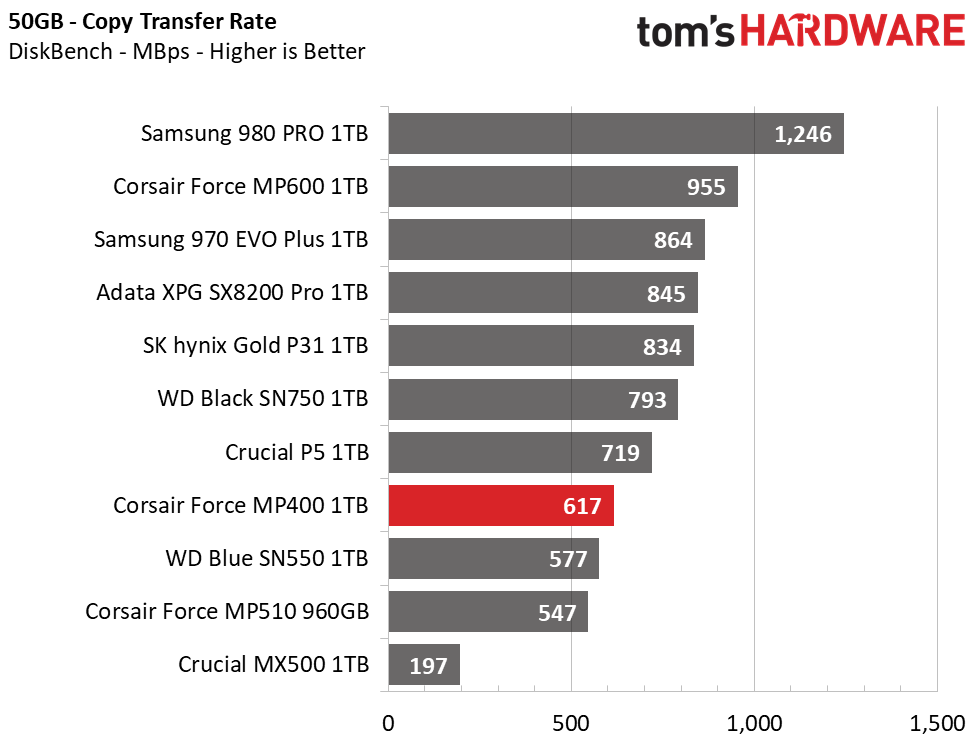
With a larger dynamic SLC cache than the Force MP510, Corsair’s Force MP400 delivers better large file copy and write performance, but it lags the Gen4 MP600 and Samsung 980 PRO significantly. Read performance is also very competitive, especially given that it is only utilizing eight dies. Compared to most Gen3 competitors, the MP400 proves quite viable for large file handling.
Trace Testing – PCMark 10 Storage Tests
PCMark 10 is a trace-based benchmark that uses a wide-ranging set of real-world traces from popular applications and common tasks to measure the performance of storage devices. The quick benchmark is more relatable to those who use their PCs for leisure or basic office work, while the full benchmark relates more to power users.
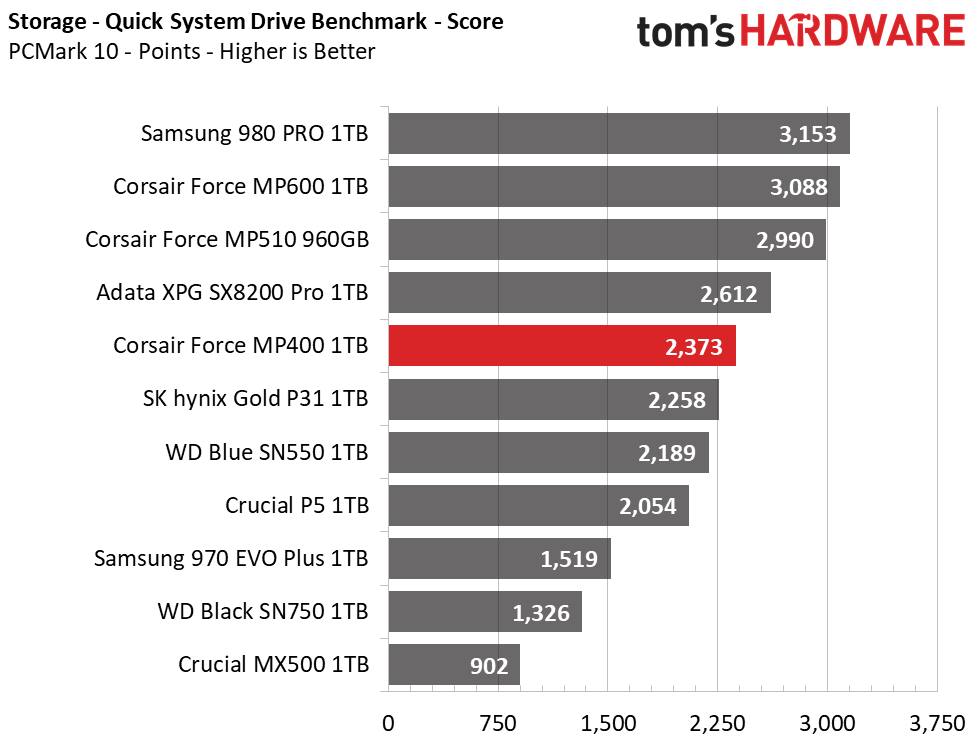
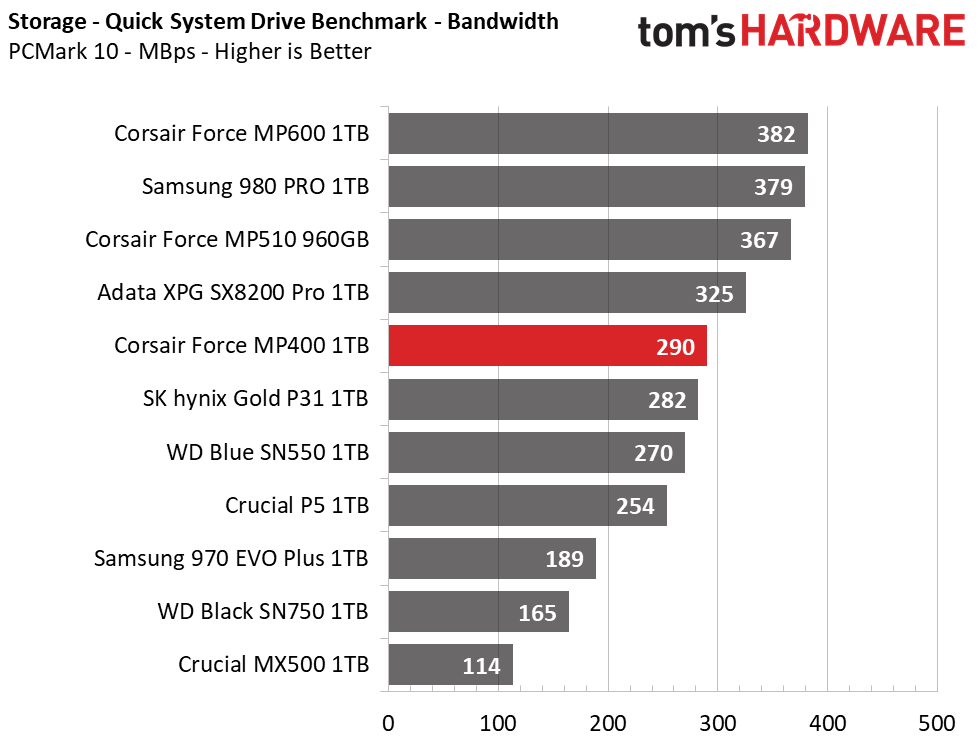


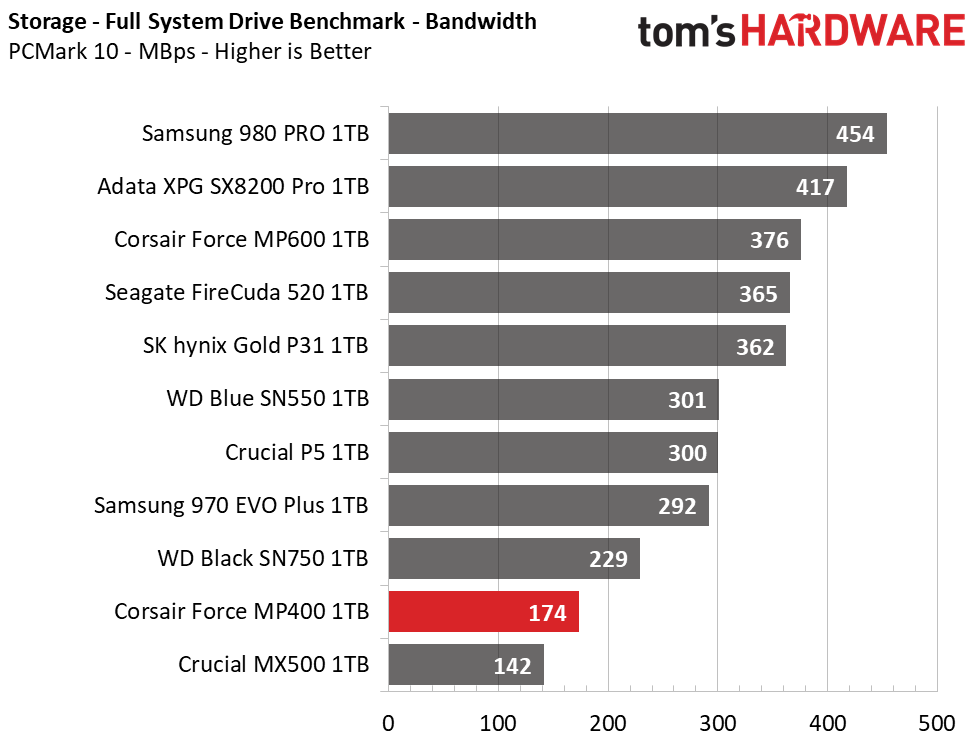

Corsair’s Force MP400 proves quite responsive to most light tasks. But when the device is hammered with heavier workloads, performance turns for the worse. Scoring second to last place, the Force MP400 delivers an underwhelming performance after being hit with PCMark 10’s Full System Drive Benchmark.
Get Tom's Hardware's best news and in-depth reviews, straight to your inbox.
Trace Testing – SPECworkstation 3
Like PCMark 10, SPECworkstation 3 is a trace-based benchmark. But it is designed to push the system harder by measuring workstation performance in professional applications.
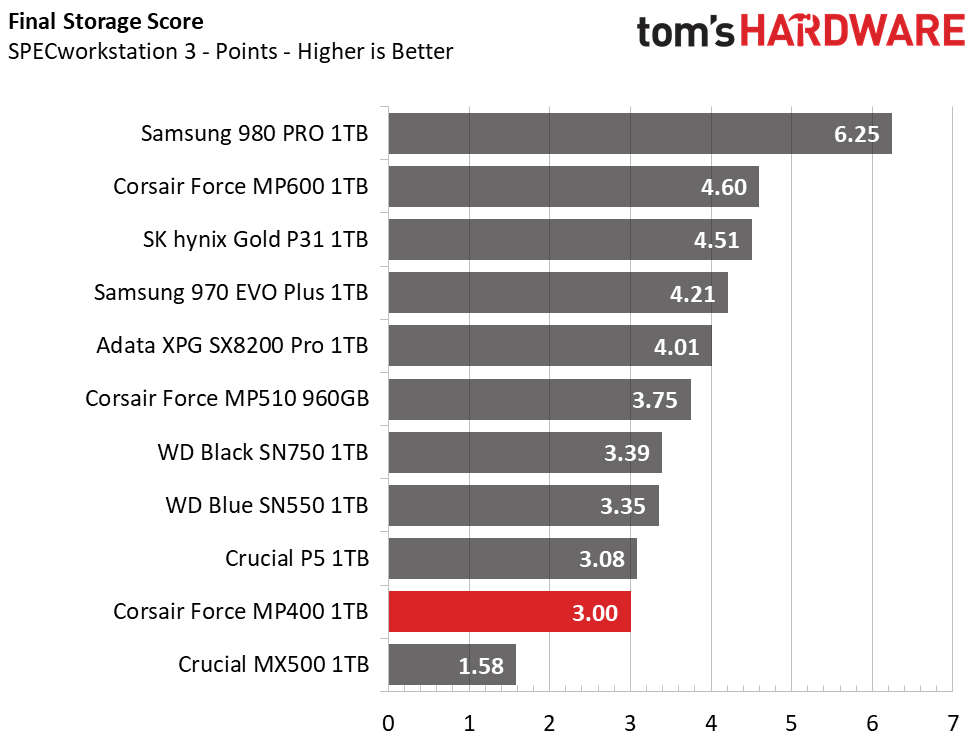
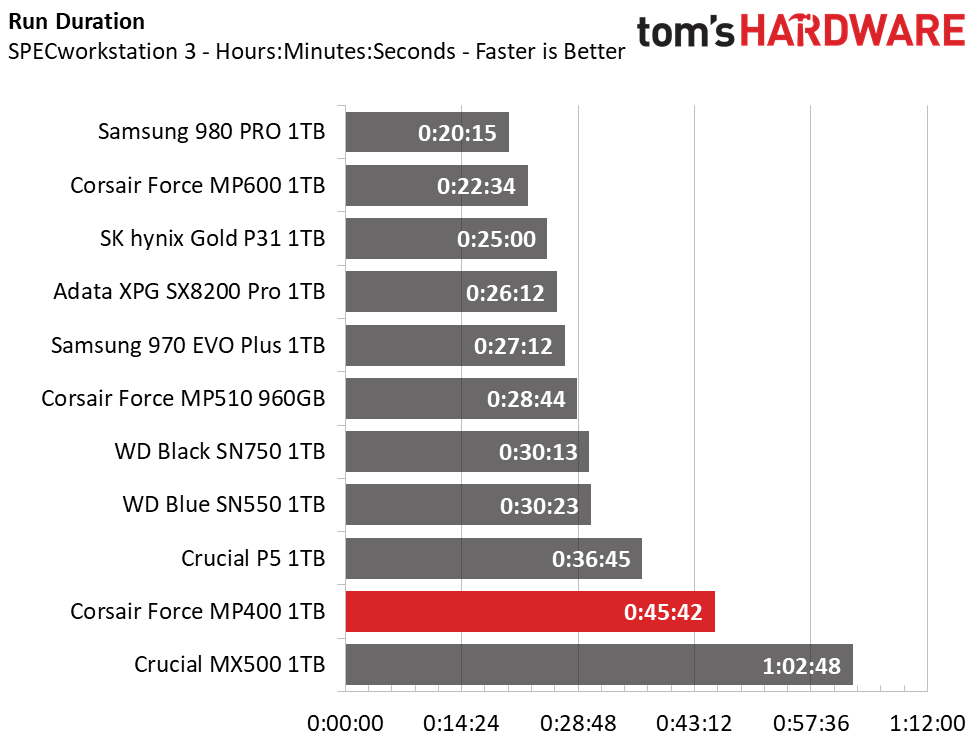
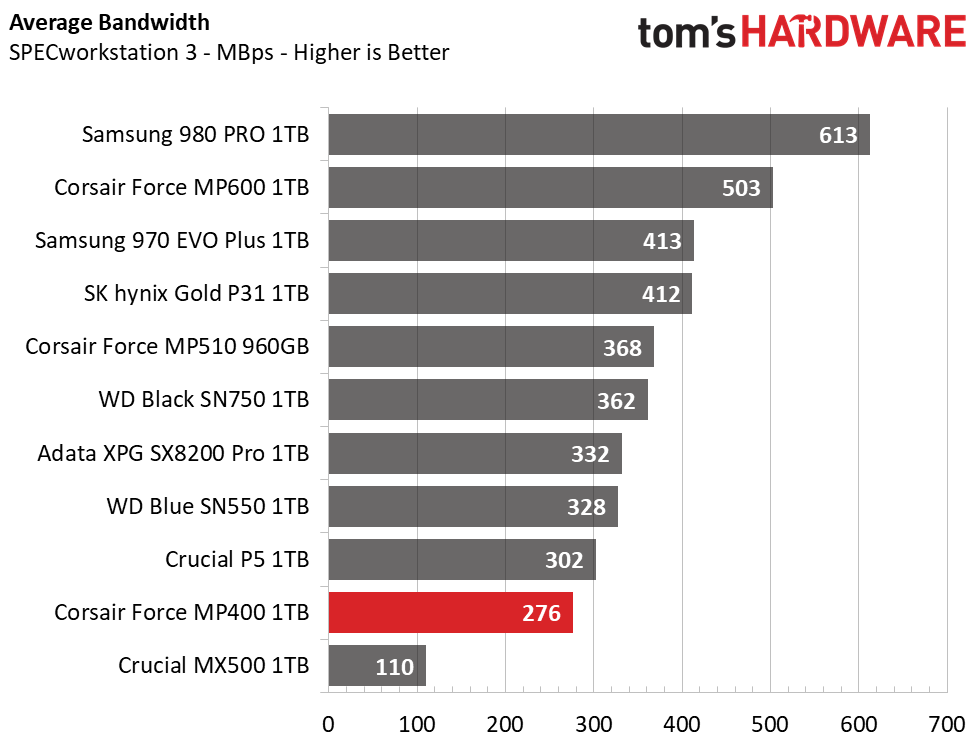

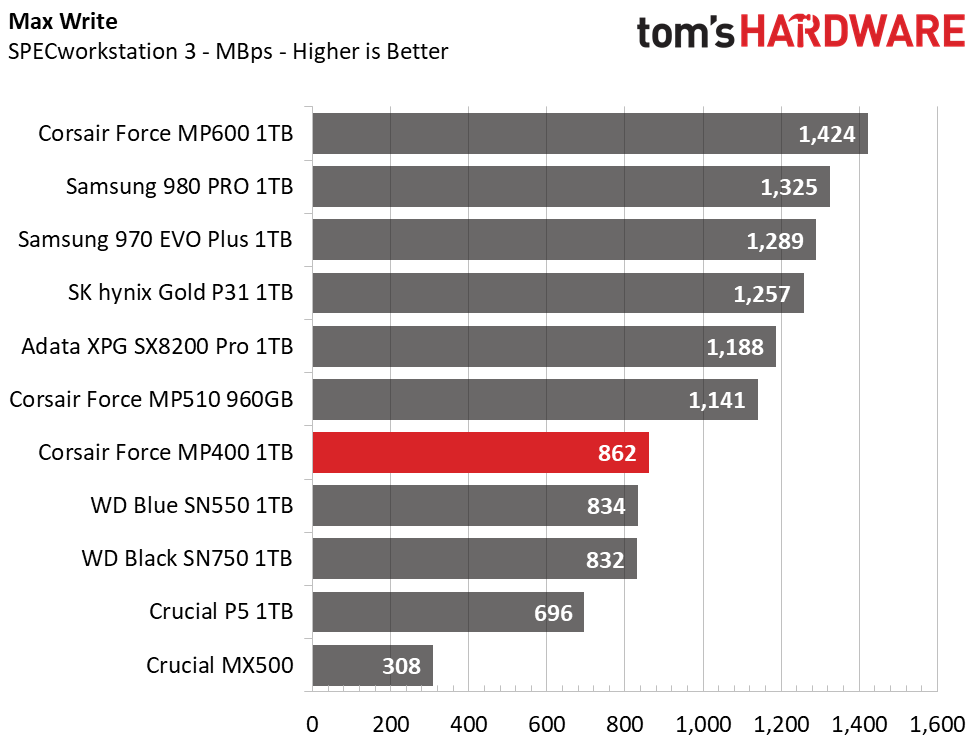
As it was in PCMark 10, Corsair’s Force MP400 didn’t score quite as well as its competition. With another second-to-last place ranking, the MP400 proves to be faster than SATA, but not quite capable of keeping up with prosumer workloads -- at least at the 1TB capacity point.
Synthetic Testing - ATTO / iometer
iometer is an advanced and highly configurable storage benchmarking tool while ATTO is a simple and free application that SSD vendors commonly use to assign sequential performance specifications to their products. Both of these tools give us insight into how the device handles different file sizes.
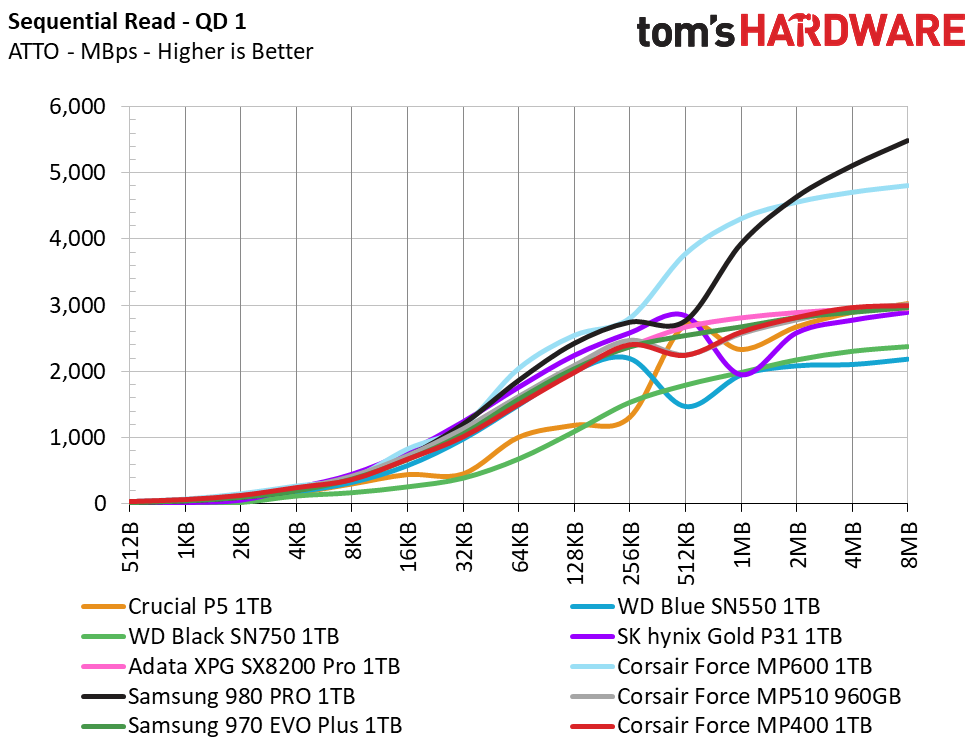
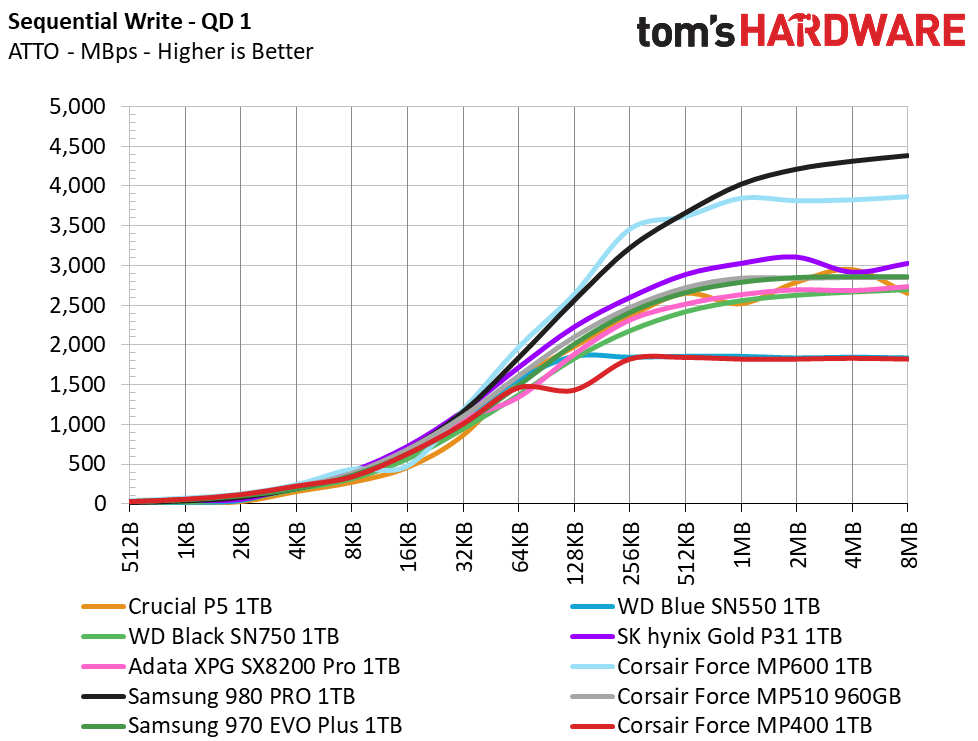
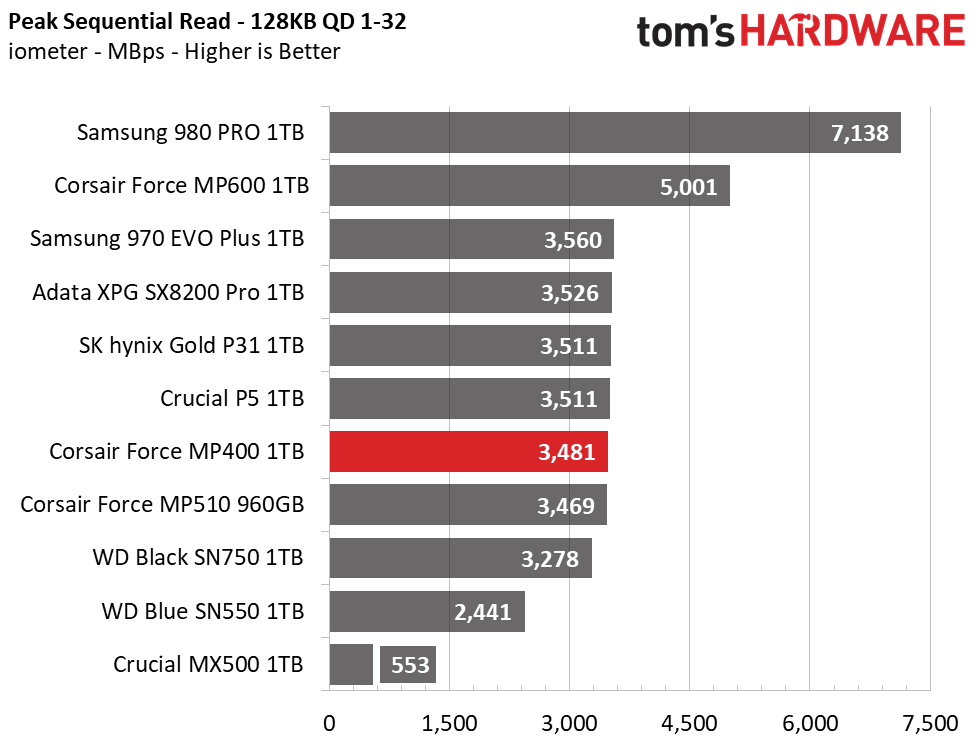
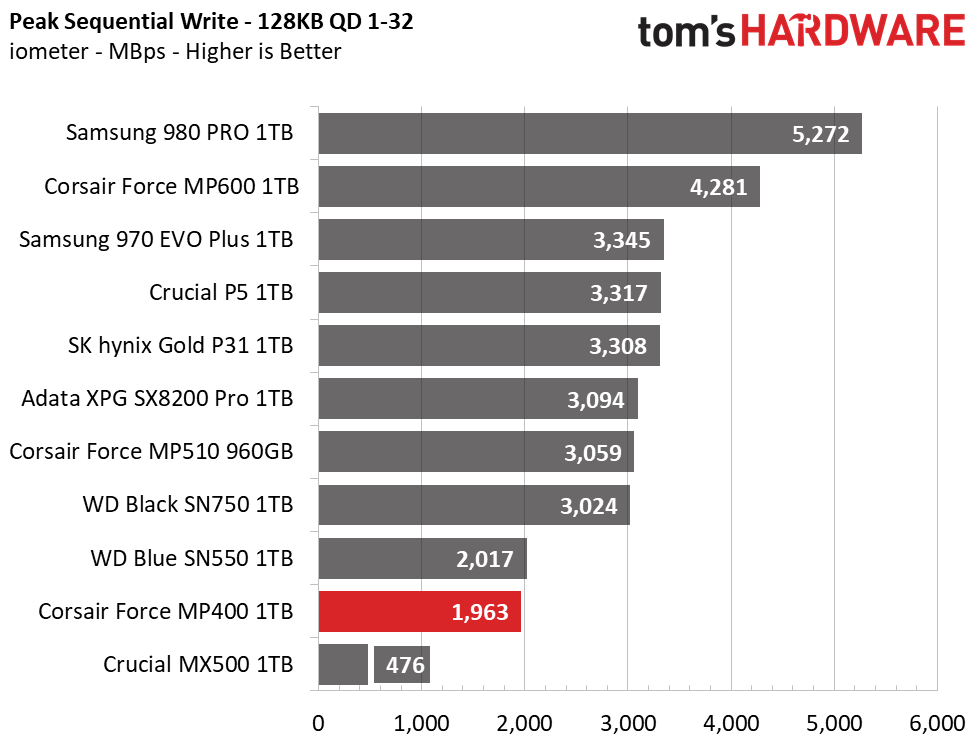
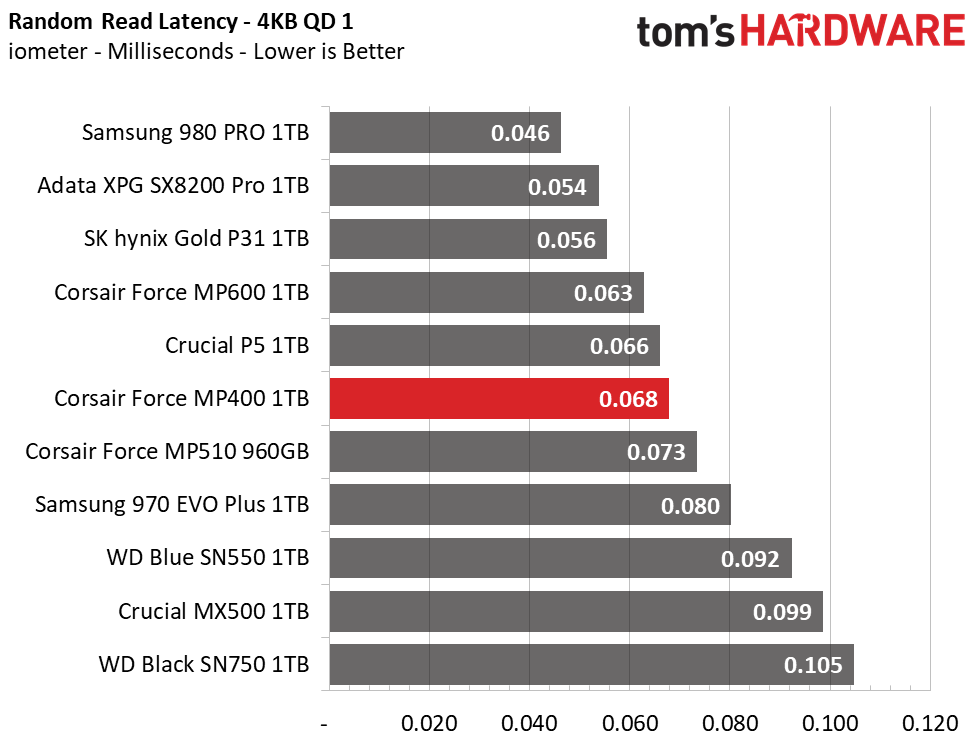


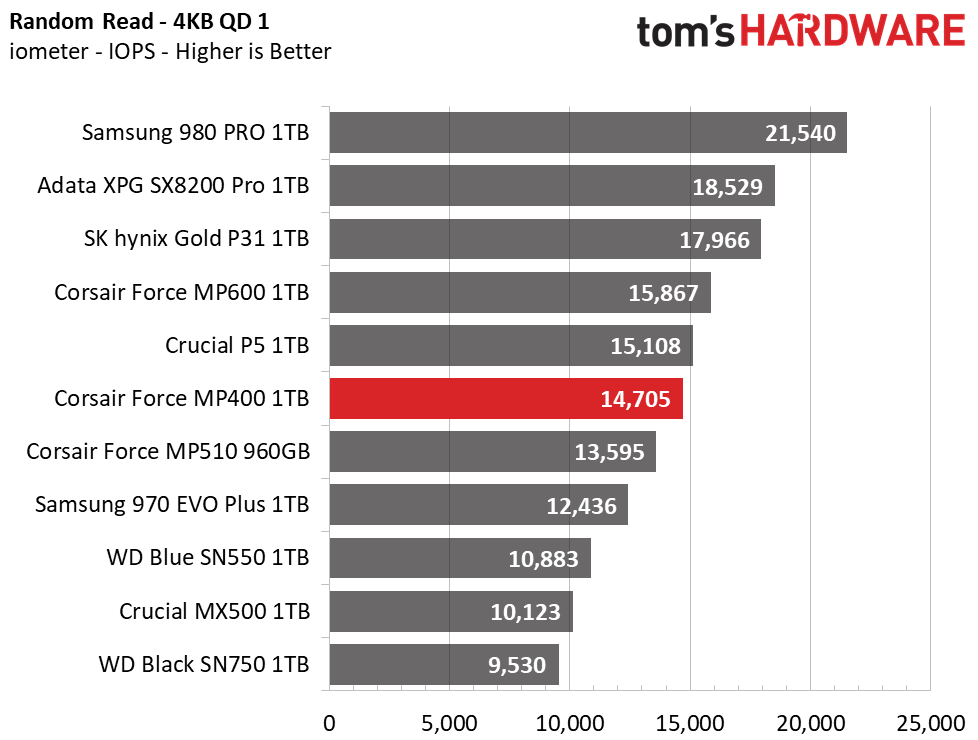
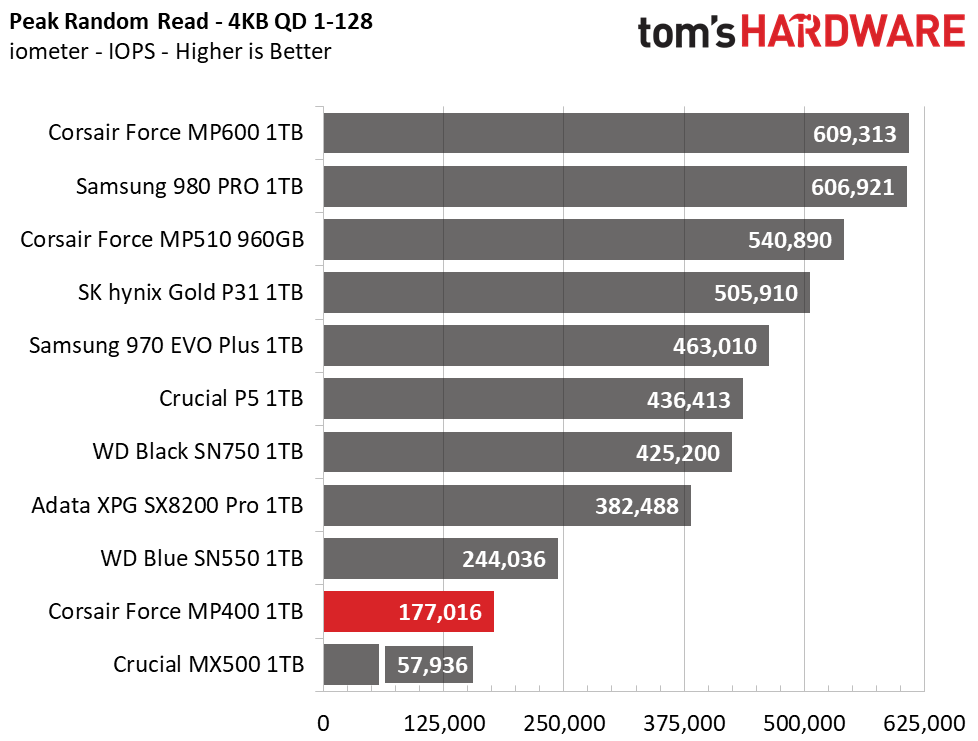
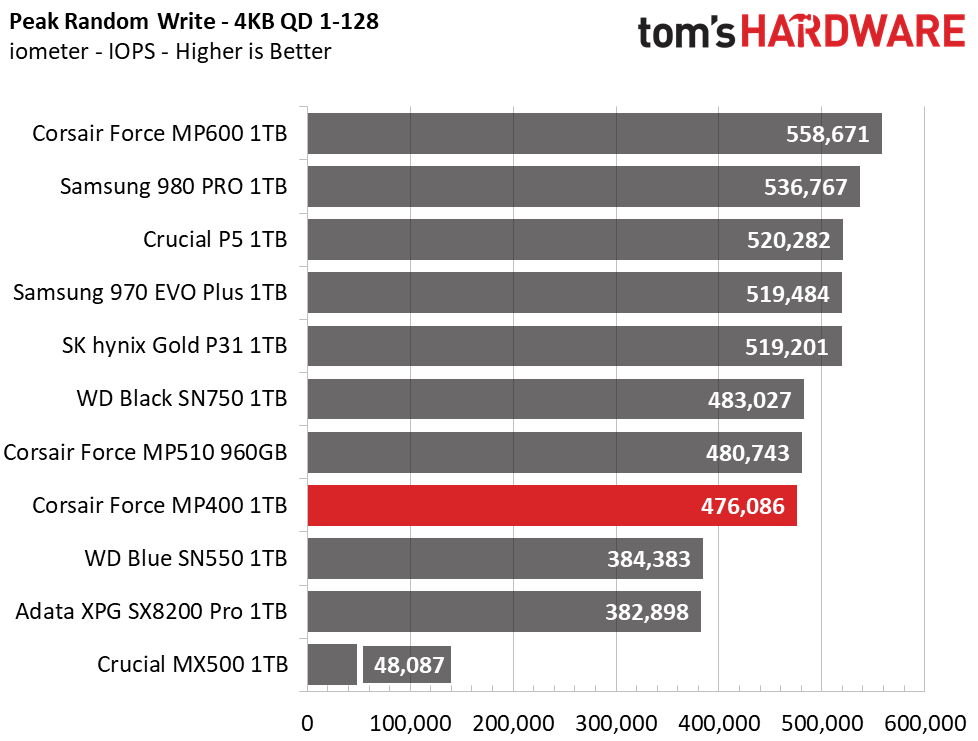
In ATTO, we tested Corsair’s Force MP400 at a QD of one, representing most day-to-day file access at various block sizes and it delivers solid performance overall. Read performance scales up well and even though the MP400 comes with half the dies, its write performance is similar to that of the WD Blue SN550. Random performance is quite responsive in both reading and writing, although under higher random read workloads performance isn’t as competitive.
Sustained Write Performance and Cache Recovery
Official write specifications are only part of the performance picture. Most SSDs implement a write cache, which is a fast area of (usually) pseudo-SLC programmed flash that absorbs incoming data. Sustained write speeds can suffer tremendously once the workload spills outside of the cache and into the "native" TLC or QLC flash. We use iometer to hammer the SSD with sequential writes for 15 minutes to measure both the size of the write cache and performance after the cache is saturated. We also monitor cache recovery via multiple idle rounds.
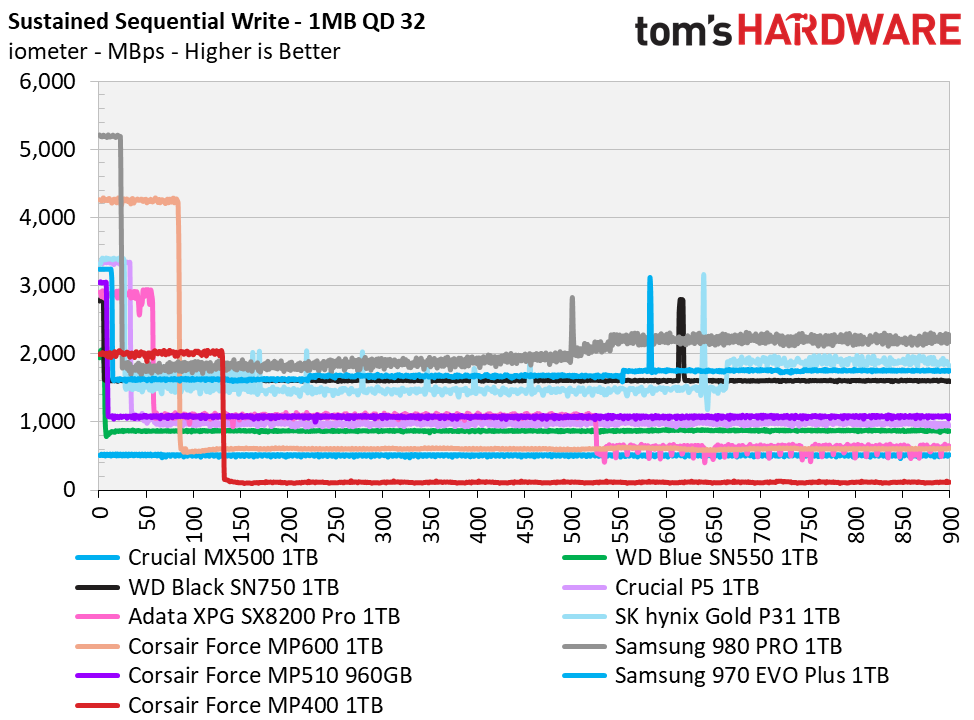
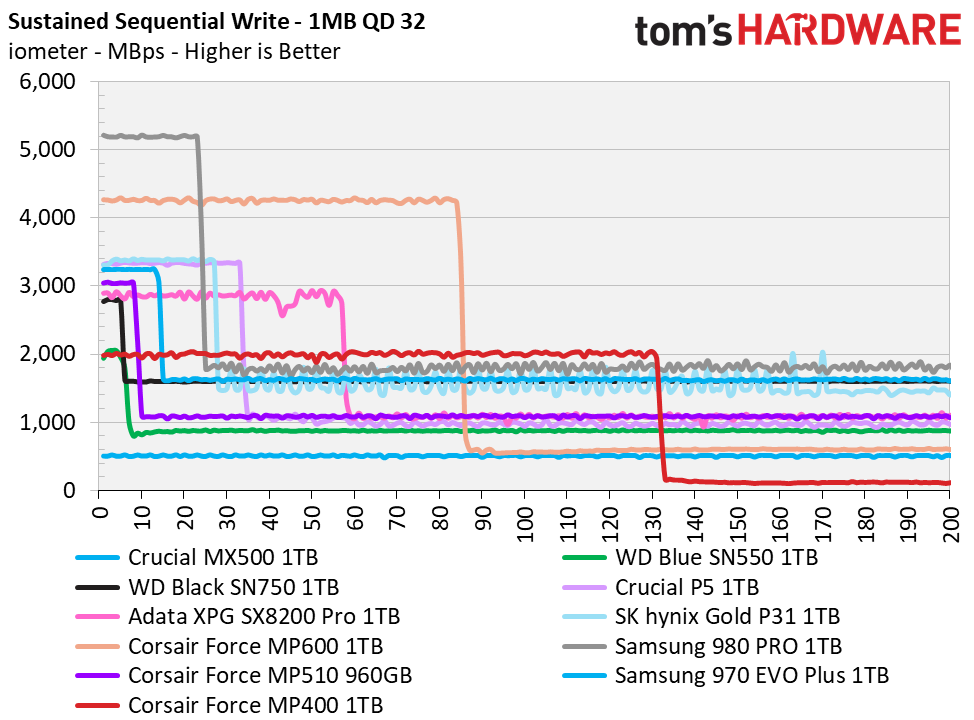
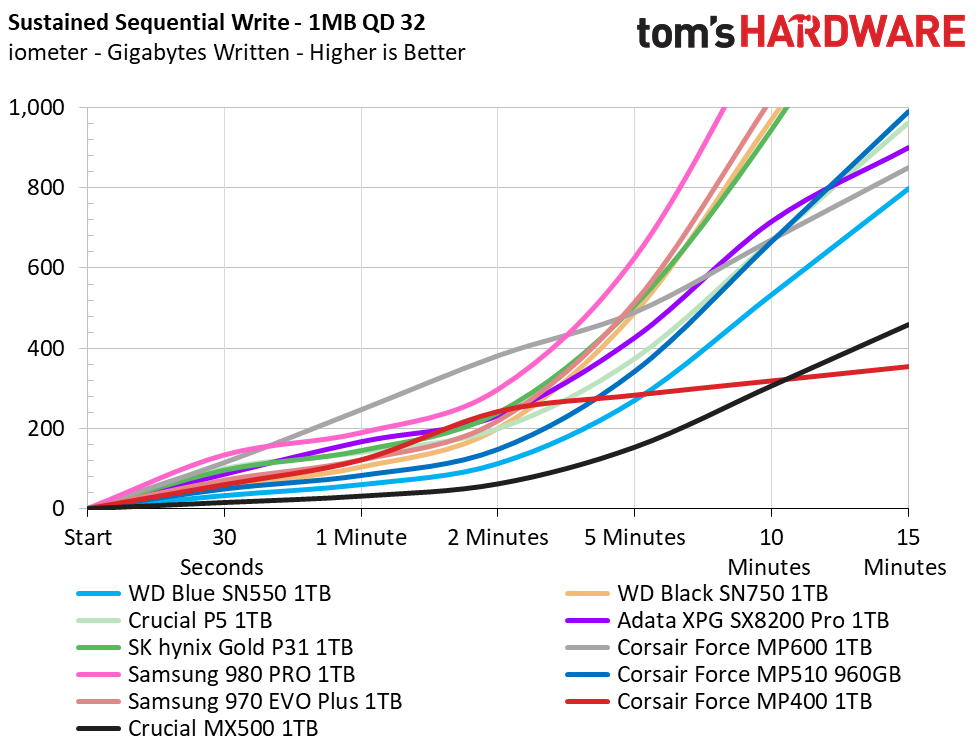


Corsair’s Force MP400 writes consistently at 2GBps for over 260GB before degrading in performance. Once the dynamic SLC cache fills, the write speed dropped to an average speed of 120MBps. This makes for bursty performance in most scenarios and it recovers moderately fast, however, the performance is degraded until the cache fully recovers when you hammer it. After 5 min of idle, write performance doesn’t surpass 650MBps. Within half an hour of idle time, the SSD recovered over half of its full SLC cache and could write at full speed, which is much faster than some SSDs, but slower than the MP510 and MP600.
Power Consumption and Temperature
We use the Quarch HD Programmable Power Module to gain a deeper understanding of power characteristics. Idle power consumption is an important aspect to consider, especially if you're looking for a laptop upgrade. Some SSDs can consume watts of power at idle while better-suited ones sip just milliwatts. Average workload power consumption and max consumption are two other aspects of power consumption, but performance-per-watt is more important. A drive might consume more power during any given workload, but accomplishing a task faster allows the drive to drop into an idle state faster, which ultimately saves power.
We also monitor the temperature of the drive via the S.M.A.R.T. data and an IR thermometer to see when (or if) thermal throttling kicks in and how it impacts performance. Bear in mind that results will vary based on the workload and ambient air temperature.
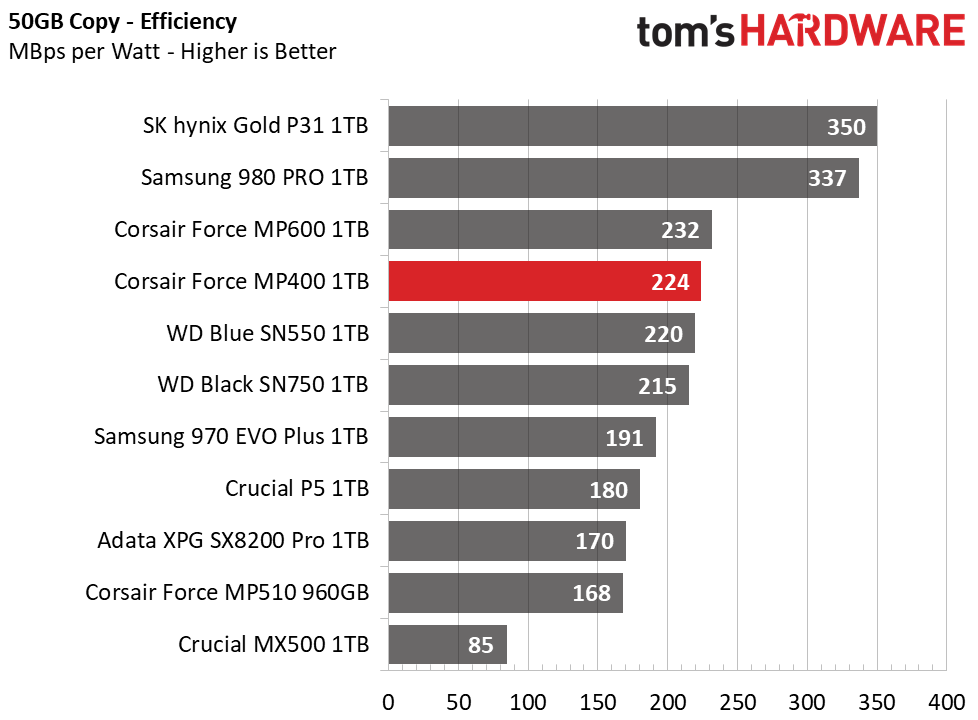

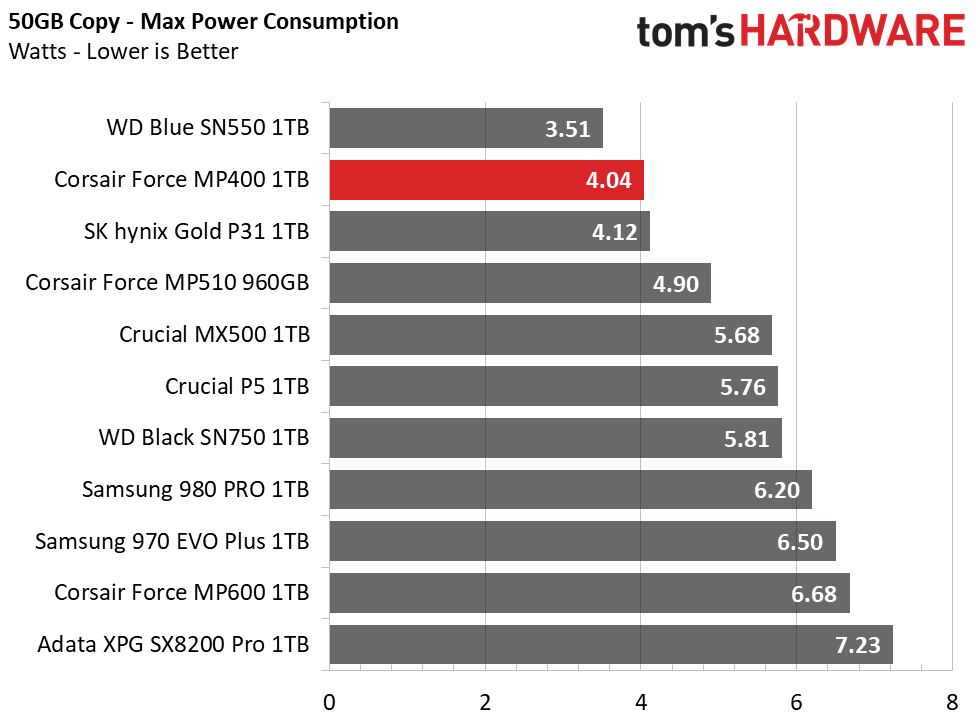


Scoring fourth place, just behind the Force MP600, Corsair’s Force MP400 proves to be an efficient SSD. Not only is it efficient under load, but it also sips power at idle. It consumes 443mW when ASPM is disabled and just 61mW when enabled to further help extend battery life and keep idle temperatures at bay.
Our 1TB sample displayed no thermal throttling after sustaining 400GB of writes at full speed with no airflow in a 24 degrees Celsius room. After the transfer, the controller peaked at 72 degrees Celsius (S.M.A.R.T. data reported 68 degrees Celsius.).
MORE: Best SSDs
MORE: How We Test HDDs And SSDs
MORE: All SSD Content

Sean is a Contributing Editor at Tom’s Hardware US, covering storage hardware.
